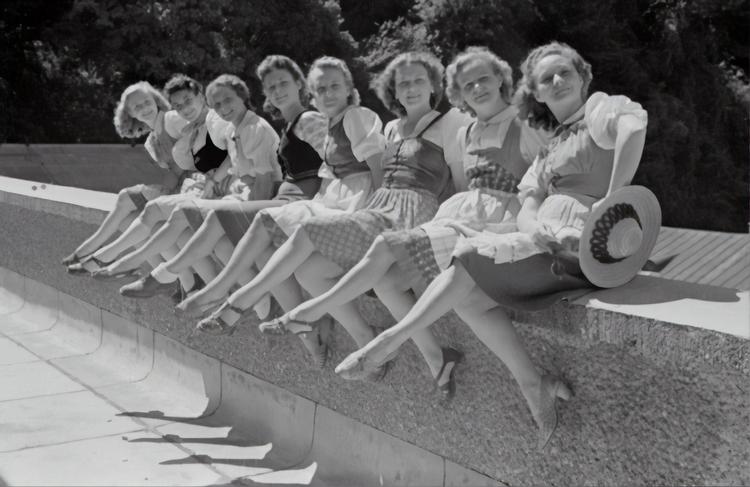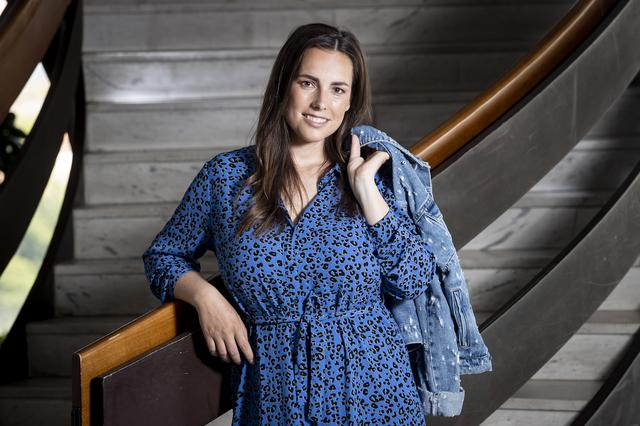Fashion trends that have ruined health.<
For most of history, women have lived as second-class citizens. American women did not get the right to vote until the twentieth century. Back in the 1970s, a woman could be denied a credit card if she did not have her husband's signature. The freedom we enjoy today is a relatively recent thing, our grandmothers lived in a time with a much smaller number of rights, and the generations that lived before them had even worse.
In addition to having fewer legal rights in the past, women also had fewer fashion options in the past. As early as the 1940s, women could be arrested for wearing pants in public because they were considered men's clothing. Today, women have many more options to wear clothes that are comfortable and express their personal style. However, historical possibilities have been relatively limited and often suppressed. Some of the fashion trends to which women have been subjected in history have been uncomfortable, restrictive, and downright dangerous. In some cases, historical fashion trends can even be deadly. Here are some of the most health-damaging fashion trends that have existed in history.
Corsets with a drawstring at the waist
Corsets are still worn today, but most of them are not nearly as restrictive as those worn by our ancestors. The rise of the corset as a means of narrowing the waist dates back to the 16th century. Historic corsets were notoriously uncomfortable and were made of restrictive materials such as whale bones. When the women were tied to a firm and rigid corset, they could not raise their hands above their heads, move too fast without running out of breath, or crouch. The corsets have made women have perfect posture by essentially locking them into a cage.
In the 19th century, doctors warned women against lacing corsets too tightly. The Lancet, a medical journal still in print today, published an article in 1890 entitled Death From Tight Lacing. As the 20th century progressed, bras began to replace the corset as underwear, but the corset did not actually die out and still sees widespread use in the 21st century. Fortunately, this is no longer a fashionable base or is considered socially necessary.
Heels up to a meter high
If you think high heels are bad today, they are nothing compared to the incredibly high shoes that were worn in Europe from the 15th to the 17th century. These shoes, known as chopines, were the forerunners of the modern platform. Although they were similar in structure, chopines towered over most of today's shoes and could be up to one meter tall. Naturally, women could not move freely in such high boots, so they held on to a walking stick or a human escort who tried to prevent the chopine wearers from falling.
The high heel goes even further than chopine. Originally worn by both men and women, the high heels were created in the 10th century as a way to help horse riders keep their feet in the stirrups. In the 17th century, men and women of the upper and middle classes wore high heels as a symbol of status. In the 18th century, men decided that heels were impractical and became primarily a women's accessory.
Eye drops from a deadly plant

Big eyes have long been considered a symbol of beauty. Studies suggest that even today, women with big eyes tend to be considered more attractive. While modern women can rely on colored contact lenses and makeup to change the look of their eyes, Italian women living in the 16th century have tried a more dangerous technique to make their eyes look bigger: the belladonna plant. France in the 19th century.
While the plant can be fatal when eaten in large doses, the plant has medicinal uses and is still used today to spread pupils. Anyone who has ever had an eye by an ophthalmologist knows how unpleasant this experience can be. The effects of the eye drops used to dilate your pupils can last for several hours after administration, so your eyes will be blurred. Doing this regularly, all due to eye enlargement, is extremely dangerous.
Breaking fingers
One of the scariest examples of fashion trends comes from China during the Chang Dynasty, which lasted from 618 to 906 AD. In the 10th century, small feet were highly valued, and the practice of tying feet to achieve "Golden Lotus" feet began at this time. For five-year-old girls, their four smaller fingers would bend and then tie tightly. This would prevent the foot from growing and permanently deform it. The legs would remain tied (even if the ties changed regularly) for the rest of the woman's life. Loss of toes due to infection was not uncommon, and even women who kept all toes had great difficulty walking.While the practice of tying feet was most common in the upper classes, the lower classes sometimes adopted this process to improve their daughters' marriage prospects. Leg binding continued until the 20th century, despite several attempts over the centuries to ban it.
Skirts preventing movement
Ease of movement has obviously been a fairly low priority for women's fashion designers throughout history. This was especially evident in the 1920s, when a new trend entered the fashion scene. The drop of crinoline resulted in a narrower skirt, but this time the fashion went too far in the opposite direction. At the turn of the 20th century, women wore such narrow skirts that they were called "lame skirts."
These lame skirts were so close around the lower limbs that the women were forced to take small steps and limp in their stylish clothes. Women who wore these clothes not only had difficulty walking and dancing, but many also found themselves in dangerous situations. Throttling clothes led to accidents and even death, making this trend one of the most dangerous trends of the century. Many people at the time were confused by the popularity of the wildly impractical trend and were widely ridiculed in period newspapers.
Toxic lead makeup
Pale skin has been in vogue for most of history. To keep up with fashion, women went to extremes to achieve a sufficiently white appearance. Lead-based makeup dates back to ancient Greece and was used for several more centuries to give women the appearance of fair skin. One of the most notable users of lead-based makeup was the Renaissance monarch of Queen Elizabeth I, who used a dangerous cosmetic product to cover the scars on her face that resulted from a smallpox attack.
Lead may have been good for the skin, but it was not good for the body. Lead was absorbed into the skin and poisoned the wearer, leading to hair loss, inflammation and scaly skin. Long-term use of lead-based makeup has sometimes actually led to death. Deadly cosmetics have claimed many lives over the years.
Swallowing arsenic for lighter skin
Throughout history, women have found many dangerous ways to lighten their skin. While Western women have more or less abandoned the search for fair skin in favor of tanning, skin lightening is still popular in some parts of the world. In India alone, hundreds of millions of dollars are spent on skin whitening products each year. These modern skin lightening products, as well as those used in history, can have very dangerous side effects.
At the turn of the twentieth century, arsenic wafers were a popular cosmetic product. The dangers of arsenic have already been well documented and the substance has been known to be lethal in large doses, but many people have sworn by the medicinal properties of arsenic and consumed it to take advantage of it. Even in the 21st century, arsenic-based drugs have sometimes been used, although better drugs have almost completely replaced this chemical in modern medicine.
Leech blood sucking for a lighter look
Perhaps one of the reasons many women today (at least in the West) prefer a tanned look is that it is much easier to darken the skin than to lighten it. Women have tried many ways to lighten their skin over the years, but one of the strangest ones must be sucking blood. Although sucking blood could lead to a (temporarily) paler color due to blood loss, it was by no means an effective way to achieve lighter skin.
The practice originated among the European aristocracy of the 14th century and was achieved by applying leeches to the skin. The use of leeches as a medicinal practice dates back to ancient Greece and for centuries has been thought to promote health. Women didn't seem horrified at the time to keep leeches on their skin because it was common practice.
Sources: thelist.com, Unsplash


 Tags:
Tags: Prev
Prev







